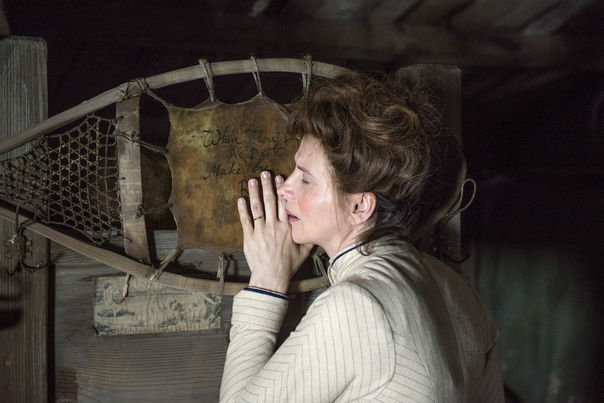NOBODY WANTS THE NIGHT
By Ana Šturm

Artistically empty and stereotypical portrait of naive female explorer.
A delicate, pale face, covered with strange futuristic glasses, is wedged in a pile of furry animal skins, a gramophone plays while a group of arctic explorers crosses the infinite white landscape on a dog sled. Mrs. Josephine Peary is a woman on a mission. Her mission is to follow her husband to where no one has ever set foot before – the geographical North Pole.
NOBODY WANTS THE NIGHT (NADIE QIERE LA NOCHE, Spain/France/Bulgaria, 2015) kicked off this year’s Berlinale Competition. The fact that it was made by an acclaimed female director, Isabel Coixet, and that it tells the story of two women who find themselves in the deadly embrace of one of the longest and coldest “nights” of their lives, made us expect a more modern female-driven piece than the one it actually delivered.
We could admire Josephine, for her courage, intensity and craziness are far greater than that of her male companions, but the film draws our attention to her beautifully designed dresses and her bourgeois manners—only serving the aesthetics of the film. In the end she becomes a tragic stereotype of naive female explorers, which is, sadly, far from who she was in real life.
The film also vaguely tries to explore some racial and humanistic matters. The two main characters, Mrs. Peary and Allaka, are strangers from two different cultures. But what does that really mean in the empty wastelands of the far north? There is no society, no rules and no judges. Only wide open spaces and the extreme cold. The only thing that matters is survival.
Life in the “winter desert” is stripped down to the basics. You have to eat and you have to stay warm. You have to stay alive. The pulse that sustains their lifeline comes from inside. Compassion slowly melts the thick ice-shield that surrounds the two of them. But what happens when only one of them can survive? Who can safely return home and who is sent into the night?

